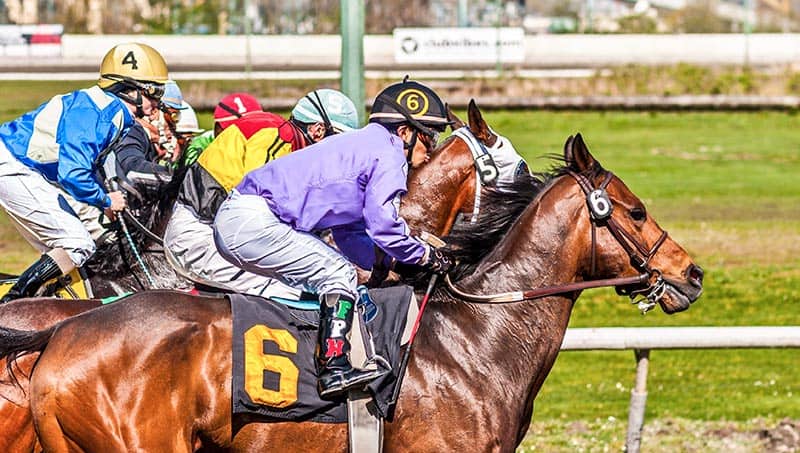When you sit down to analyze the weather, it becomes apparent that it is an important aspect of horse racing. It might make or ruin an owner’s/trainer’s/jockey’s/punter’s day. If you do your research, the weather may become a useful tool in your betting strategy. You can keep up to date with fixtures by looking at race cards today.

Turf and dirt racecourses
Turf racing is held on grass, whereas dirt racing is done on a rougher surface that typically consists of dirt and sand over the top of clay and gravel. Turf racing is popular in Europe, and weather conditions have a major impact.
In the United Kingdom, rainfall has a significant impact on turf racecourses. If there hasn’t been enough rain, particularly. The grass hardens, resulting in less give beneath the horse’s foot than normal. Every stride becomes increasingly difficult underfoot as the horse goes through these circumstances. When grass is laid down in places where dirt courses are common, it replicates the terrain of a dirt course, and horses accustomed to turf may struggle as a result.
If it’s been raining for a while. If the grass is soft or yielding, the horses will sink deeper into the track than usual. As a result, horse speed becomes less important than horse endurance when running fast. Essentially, these factors make it difficult for “explosive” pace horses to achieve their full potential.
In dry spells, however, dirt is unchanged; however, due to wet conditions it may be altered. When dirt gets damp, it becomes extremely sloppy, and horses are frequently struck in the face with mud kicked back by the horse ahead, resulting in unexpected results. The grip on the track is also far more slippery; the wet dirt track has comparable circumstances to a turf track. For some horses, this is a positive change; however, most will not be used to it.
Given the impact rainfall has on courses, the weather conditions are well worth considering as a bettor. Viewing a breakdown of how horses have performed in various situations might reveal their strengths and flaws. This will influence your perspective and opinion of which horses you choose to be “value” candidates.
“The going” in betting
The going is classified according to the weather. You might wish to use it to determine how a horse performed in similar situations, such as when the ground was extremely wet or muddy.
Try to match the current trend with the horse’s past performance for each selection you make. It is probable to continue performing well under similar weather conditions if it has consistently performed well under particular weather situations. If you’re not sure, I recommend betting on a track with the least amount of rain; this usually produces the most consistent results.
It’s worth noting that track conditions aren’t always the same throughout a race day. This is especially true in the UK and Ireland, where the weather can change rapidly and unpredictably. As a result, your early wagers won’t necessarily be worth as much when the race starts.
Even if you correctly predict weather changes, there are still secondary consequences from rainfall that contribute to a race’s unpredictability, such as:
- The condition of the track deteriorates as the day goes on. Even if the weather calms down hours before the race, your selected horse may run slower than you anticipated due to previous races’ damage to the surface. In late-night events, when many races have been held, this is particularly significant.
- Horses’ eyes and noses are splattered with muck. Jockeys may utilize mud to their advantage by forcing their horse ahead of the pack. Mud is sprayed in front of them, which prevents other horses from reaching their maximum potential and retreating to avoid discomfort.
Leave a Reply